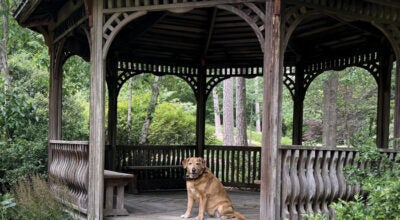Kousa dogwood blooms later in the spring
Published 12:00 am Friday, May 15, 2009
Native flowering dogwood blooms are gone, but the tree’s cousin, the Kousa dogwood, is now in peak bloom.
Native to China, kousa dogwood (Cornus kousa) is a showy, flowering tree that leafs out before flowering, providing a wonderful green backdrop to a mat of colorful flowers.
In the landscape the tree is perfect as a specimen or along an entranceway. It is often plotted as a focal point or seasonal accent tree in home landscapes or parks. Salisbury’s Hurley Park has an excellent display now in bloom near the gazebo. You can also spot them as street trees throughout Salisbury.
This dogwood species appeals to landscape architects and designers because it’s a small, ornamental tree with four-season appeal, good foliage, beautiful flowers, showy fruit and fall color. This dogwood is also very popular because of its hardiness and adaptability to our climate and growing conditions.
Unlike native dogwoods, (Cornus florida) kousa dogwoods can adapt to dry, compact soils often found in the Piedmont. The tree also has the ability to grow in near alkaline soils which are death to our native dogwoods. Another important factor is that, unlike the native dogwood, kousa dogwoods have no serious disease such as spot anthracnose. This disease was a serious problem this spring for our native plants.
The bloom of a kousa dogwood is rather unique and distinct, with pointed bracts (white petals) that can reach 3 inches across. Each flower seems to have perfect petals; the flowers are actually small yellow-green inflorescences in the center of the petals.
The leaves of this small tree emerge a couple of weeks after native dogwood bloom. Foliage is similar to native dogwoods, with dark green 3-inch leaves fading from red to purple in September.
Another asset is the large, raspberry-like fruit in the fall. The fruit bears no resemblance to native dogwood fruit. The globular, green 2-inch fruit fades to pink during late summer and in September turns a dull red color, resembling a giant upright raspberry. Fruits are devoured by both squirrels and birds.
Another interesting aspect of the fruit is that it’s edible. Some say the taste resembles pawpaw while others describe the internal flavor of the fruit as mild strawberry.
Another great advantage is this dogwood is available in different colors, forms and sizes. There are more than 20 different cultivars available for the landscape with a wide range of colors, shape and forms ó too many to list. Look online at http://www.ces.ncsu.edu/depts/hort/consumer/factsheets/trees-new/ cornus_kousa.html for more information on kousa cultivars.
Darrell Blackwelder is an agricultural agent in charge of horticulture with the N.C. Cooperative Extension Service in Rowan County. Contact him at 704-216-8970.



